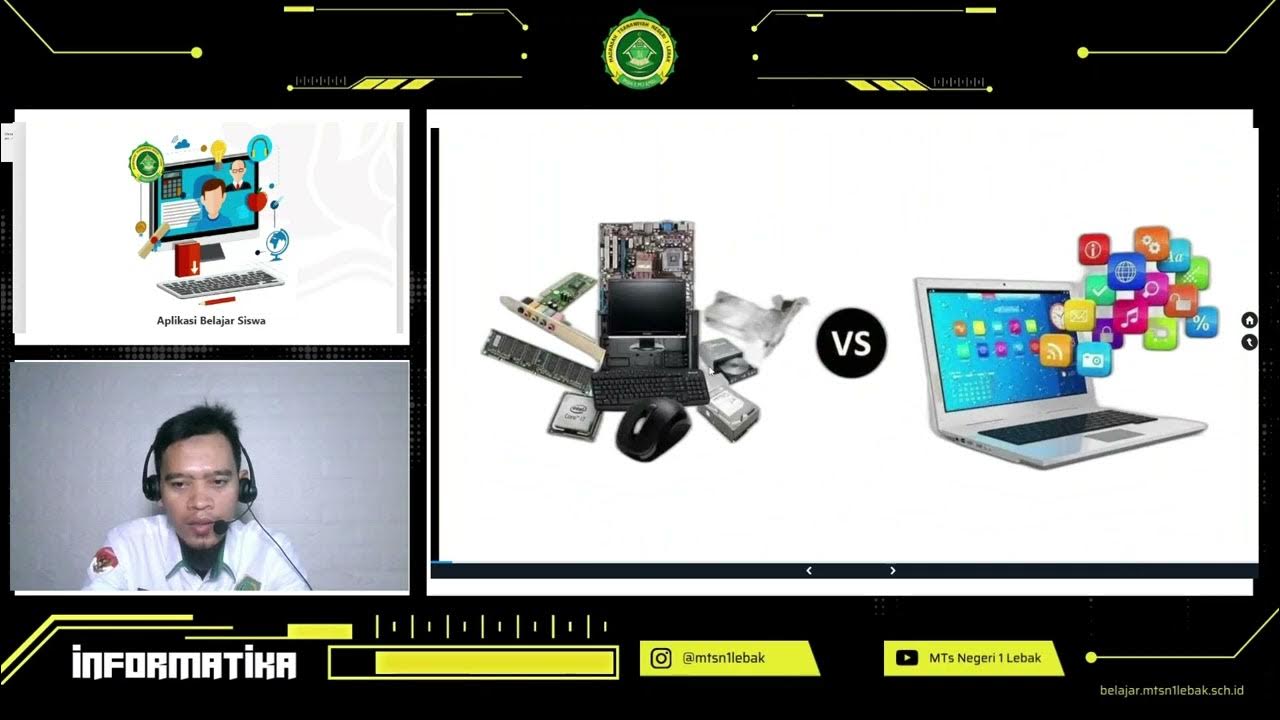Evaluasi dan Pemeliharaan Sistem Informasi Rumah Sakit
Summary
TLDRThis script outlines the process of evaluating and maintaining an information system at a hospital. It covers key steps such as system monitoring, where the performance and user satisfaction are assessed, and evaluation to ensure goals are met. The maintenance phase involves routine updates, security checks, and error handling to ensure smooth operations. The feedback and further development process focuses on gathering user feedback, analyzing it for feature improvements, and testing new features before full implementation. These steps collectively aim to enhance system performance, ease of use, and user satisfaction in a healthcare setting.
Takeaways
- 😀 Regular monitoring of system performance includes tracking data access times, input errors, and user satisfaction (nurses and doctors).
- 😀 Evaluation of the system's success is carried out by analyzing monitoring results and comparing them to set goals.
- 😀 A comprehensive evaluation report is created, including identified issues and recommendations for system improvements.
- 😀 Follow-up actions from the evaluation include scheduling regular reviews and providing additional user training if necessary.
- 😀 Routine maintenance is essential to keep the system running smoothly, including software updates and bug fixes.
- 😀 Security updates are critical to protect patient data and secure the system against potential cyber threats.
- 😀 Software updates help to enhance system performance, introduce new features, and resolve existing deficiencies.
- 😀 Bugs or system errors are handled promptly, particularly those that affect system operations or user experience.
- 😀 Regular data backups are crucial to prevent data loss and ensure quick recovery in case of technical issues or hardware failure.
- 😀 Feedback is gathered routinely from users (nurses, doctors, administrative staff) through surveys or interviews to assess system usability and functionality.
- 😀 User feedback is analyzed to identify the need for new features or system improvements, ensuring the system evolves to meet user needs.
Q & A
What is the first step in evaluating the information system at the hospital?
-The first step is monitoring the system's performance by measuring data access times by nurses, tracking error rates in data input during the first month, and conducting user satisfaction surveys with nurses and doctors to assess the system's effectiveness in their daily tasks.
How is the evaluation of the system conducted after the monitoring phase?
-After monitoring, the evaluation process involves analyzing the results to confirm if the system's objectives have been achieved, and then preparing an evaluation report that includes data on issues and recommendations for improvement.
What is the purpose of regular evaluations in the system maintenance process?
-Regular evaluations are essential for ensuring the system remains aligned with its goals. They also help to identify any issues or areas for improvement and ensure ongoing user training if needed.
What are some key activities involved in maintaining the information system?
-Key maintenance activities include software updates, implementing regular security updates to protect patient data, handling detected bugs or issues, ensuring timely data backups, and addressing system failures quickly to minimize disruptions.
Why are regular software updates and security patches crucial for the hospital's information system?
-Regular software updates and security patches are crucial to protect sensitive patient data, safeguard the system against cyberattacks, and ensure the system runs efficiently by adding new features and fixing bugs.
What is the role of user feedback in the system development process?
-User feedback plays a vital role in identifying areas where the system can be improved. Feedback from nurses, doctors, and administrative staff helps identify needs for new features or adjustments, ensuring the system better supports their daily tasks.
How are new features tested before they are fully implemented?
-New features are tested in smaller, controlled environments or specific units within the hospital. Feedback from the users involved in the testing process helps refine and improve the features before they are fully deployed across the system.
What kind of improvements can be made based on user feedback?
-Improvements based on user feedback can include adding more efficient search features for patient history, improving access speeds, and refining usability aspects of the system to better align with users' daily needs.
How is data backup handled to ensure continuity in case of system failure?
-Data backup is performed daily or as per the scheduled intervals. This process ensures that important information is not lost, and in case of technical issues or hardware failure, the hospital can recover vital data quickly.
What are the primary goals of the ongoing system evaluation and maintenance activities?
-The primary goals are to ensure the system operates smoothly, remains secure, meets user needs, and continuously improves to support the hospital's operations effectively. This includes maintaining system performance, security, and implementing necessary upgrades.
Outlines

هذا القسم متوفر فقط للمشتركين. يرجى الترقية للوصول إلى هذه الميزة.
قم بالترقية الآنMindmap

هذا القسم متوفر فقط للمشتركين. يرجى الترقية للوصول إلى هذه الميزة.
قم بالترقية الآنKeywords

هذا القسم متوفر فقط للمشتركين. يرجى الترقية للوصول إلى هذه الميزة.
قم بالترقية الآنHighlights

هذا القسم متوفر فقط للمشتركين. يرجى الترقية للوصول إلى هذه الميزة.
قم بالترقية الآنTranscripts

هذا القسم متوفر فقط للمشتركين. يرجى الترقية للوصول إلى هذه الميزة.
قم بالترقية الآنتصفح المزيد من مقاطع الفيديو ذات الصلة
5.0 / 5 (0 votes)






